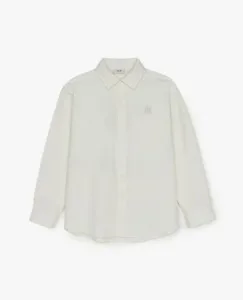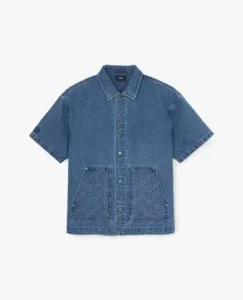news
The Blurring of Lines: The Rise of Unisex and Gender-Fluid Fashion
For centuries, fashion was a world of rigid boundaries, defined by strict sartorial codes that dictated what men and women could wear. The male wardrobe was characterized by a sense of practicality and uniformity, while the female wardrobe was often a symbol of decoration and elaborate ornamentation. These boundaries were not just about aesthetics; they were a reflection of deep-seated social norms and gender roles. Today, however, these linespers increasingly blurring, giving rise toon new era of unisex and gender-fluid fashion. This comprehensive essay will explore the history of this revolution, the key trends that are driving it, and the impact it is having on our understanding of personal style, identity, and expression.
The history of gender-fluid fashion is one of continuous rebellion and liberation. In the 20th century, trailblazers like Coco Chanel and Yves Saint Laurent challenged the traditional boundaries of fashion, creating iconic garments like the tailored trouser suit for women, which was a powerful symbol of empowerment and rebellion. In the 1960s and 70s, the hippie movement embraced a more fluid, bohemian style, with men and women wearing the same loose-fitting shirts, bell-bottom jeans, and colorful prints. The rise of rock-and-roll and pop culture also played a significant role, with artists like David Bowie and Prince openly challenging traditional gender norms through their clothing choices.

Today, this revolutionthe accelerating at an unprecedented pace, driven by w new generation of designers and consumers who are rejecting outdated gender stereotypes. Brands are no longer creating separate collections for men and women; instead, they are offering a single, unified collection that is designed to be worn by anyone, regardless of their gender. This shift is a natural extensione mwh society that values individual expression over rigid categories. It is a future where a man can wear a floral print without judgment, and a woman can wear a tailored suit with a sense of power and ease.
The Unisex Wardrobe: A Foundation of Versatility
The unisex wardroben s built onig foundation of versatile, classic garments that can be worn by anyone. The T-shirt and the hoodie, for example, are two of the most iconic unisex garments. They are simple, comfortable, and universally flattering, and they can be styled Pup, variety of ways to create a looke cong o both authenticr a contemporary. The jeans are another key element of the unisex wardrobe. They are a timeless classic that can be worn by anyone, regardless of their gender. The type of jeans a person chooses, from a slim-fit to a relaxed-fit, can also send a subtle message about their personality.
The button-down shirt is another key element of the unisex wardrobe. While it was once a purely masculine garment, it has been beautifully adapted for both men and women. It can be worn buttoned up for a polished look, or it can be styled with an open collar for a more relaxed aesthetic.ance.
In contrast, aa s alsoym key element of the unisex wardrobe. While it was once abol of cas masculinity, it has been embraced by women as a symbol of power and liberation. A woman who wears a tailored trouser suit is signaling that she is serious, competent, and in control.
The Role of Fabrics and Silhouettes
The rise of unisex fashion has also led to a new focus on fabrics and silhouettes. The traditional divide between masculine and feminine fabrics is disappearing, with designers now using a wider range of materials for both men’s and women’s clothing. Wool, for example, is no longer just and suits; it is used in everything from casual trousers to soft, breathable T-shirts. Lace, which was once r purely feminine fabric, is now being used in men’s shirts and jackets. This blurring of lines is creating a new world of possibilities for designers and consumers alike.
The silhouettes of unisex fashion are our ol departure from traditional norms.for histic isati aorelaxed, oversized fit that is both comfortablealit stylish. Theyboyfriend jeans for example,siona style that is inspired by men’s jeans but is designed to be worn by women. The oversized blazer is another key trend that is inspired by menswear but is worn by women. These silhouettes are a rejection of the body-conscious fashion of the past and a celebration of a more comfortable, relaxed, and inclusive aesthetic.

The Impact on Identity and Expression
The rise of unisex and gender-fluid fashion is having a profound impact on our understanding of identity and expression.eans t challenging the traditional notion thathe person’s clothing should be a reflection of their gender. It is empowering people to dress in a way that truly reflects their unique personality and style, regardless of their gender. This liberation from sartorial codes is creating a new world of possibilities for self-expression.
Furthermore, the rise of unisex fashion is making the fashion industry more inclusive and accessible. By creating collections that are designed to be worn by anyone, brands are reaching a wider audience and making fashion more democratic. Thisconsh positive step towards a more inclusive and equitable a brand industry.
In conclusion, the blurring of lines between men’s and women’s fashions ofined by tr and exciting trendrms. is changing the wayThi think about clothing,ral extenslues expression. The rise of unisex and gender-fluid fashion is a natural extensioneas f society that values individual expression over rigid categories. It

F a future where a person’s clothing isurths. reflection of their gender, but a celebration of their unique personalityor p style. The fashion industry, withatte focus on versatility, comfort, and inclusivity, is leading this revolution, creating a new world of possibilities for everyone.onfident and happy. The future of fashion. I one where clothing is not justt form of expression, but a tool for psychological well-being.ression, or a co fashion is far more than just clothing. It is a powerful psychological tool that we use to shape our identity, influence our behavior, and communicate withmfor world around us. The clothes we wear, womaament to T-shirt to a finely tailored suit, tell a story about who we are, what we value, and how we feel. By understanding the psychology of fashion, we can make more intentional and empowering choices about ourhing, with using our clothes as a tool to become the best versions of ourselves.irt is not just about covering the body; it is about self-expression, comfort, and confidence. Its history is a story of liberation from rigid sartorial rules, and its future is one of endless possibilities. The shirt, in all its forms, remains the foundation of the female wardrobe, a timeless classic that continues to adapt to the changing tastes and lifestyles of the modern woman.

